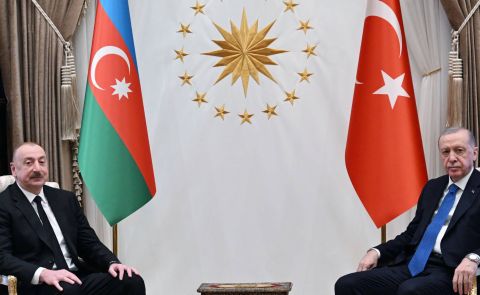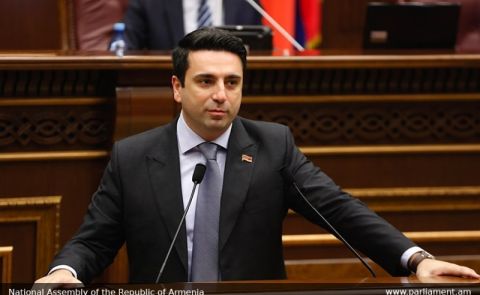
Toward the implementation of “Persian Gulf-Black Sea” International Corridor: Opportunities and Obstacles

The turbulent geopolitics of the South Caucasus causes numerous threats for the landlocked, resource-poor Armenia. The country attempts to overcome the transport blockade by searching for new communication opportunities, integration opportunities with international transport corridors (ITC), links to the Georgian ports, and its northern strategic ally Russia. Due to the lack of territorial access to the sea and the blockade imposed by Azerbaijan and Turkey, Armenia is obliged to rely on the territory of its two other neighbours, Georgia and Iran, to secure indirect maritime access.
In this context, the "North-South" ITC initiated in the early 2000s is considered one of the most promising transport and logistics international projects not only for Armenia but for other regional players as well. This position is because it provides an opportunity for diversifying transport routes by linking North Europe to Asia, particularly providing a corridor between Baltic countries and India through Iran and Russia. This in turn increases trade turnover between those countries, as well as to strengthen their economic and cultural ties.
At its initial stage, it was supposed that main cargo flows would take place through Russian territory to Northern and Western Europe from India and in the reverse route, however, currently the corridor’s operation mainly relies on Russia-Iran freight turnover because of technical and political complications. As for Armenia, the construction of the North-South corridor began back in 2012 and it was planned that the road would be fully completed and commissioned by 2019. However, about 20% of the highway has been built.
After the sanctions were reinstated by the United States in 2018, Iran has radically reviewed its ambitions and priorities. The country aspires to turn itself into a trade hub not only for Middle Eastern and Asian countries but also to connect them to Europe. Therefore, Tehran has embarked on the project of establishing the “Persian Gulf—Black Sea” transport corridor that will connect Iran, Armenia, Georgia, and Bulgaria. The new corridor is planned for Iranian trucks, which should stretch through Armenia and Georgia to reach the Black Sea, from where they can move to Bulgaria, Greece and even Italy by sea. Basically, the “Persian Gulf—Black Sea” represents an alternative to the North-South ITC or, more precisely, North-South is just a part of the larger “Persian Gulf – Black Sea” ITC project. One of the advantages of the project is that it will enhance cooperation and regional security, commercial and economic ties in the South Caucasus and neighbouring regions. Moreover, thanks to its international transit function, the corridor is expected to foster the standardisation and improvements of management and warehousing functions. It would also have a fundamental effect in facilitating notable changes in road safety standards across the region and increasing efficiency.
The “Persian Gulf—Black Sea” ITC will also have crucial benefits for the Armenian economy. Particularly, it would enable Armenia to become the main transit country in the region as the corridor will pass through its territory. Nonetheless, the more ambitious the project is, the more challenges Armenia faces toward its implementation. The most considerable obstacle is the lack of serious infrastructures to transport Iranian freight. Armenia has been struggling for years to attract foreign investments and now, finally, this problem is seemingly being resolved with the help of substantial financial assistance from the European Union. After the Second Karabakh war, the latter has persistently been pursuing its interests in the region through allocating considerable financial resources to Armenia. Specifically, the Armenian government has received around 1.6 billion euros from the EU for rebuilding its economy - creating new jobs and developing its infrastructure, and additional 600 million euros for the construction of the North-South transport corridor. The funds are projected to be directed towards the construction of bridges and tunnels in the mountain ranges of the southern region of Armenia – Syunik.
According to Nazeli Navasardyan, Ph.D., Associate Professor, Senior Research Fellow at the Institute of Oriental Studies of National Academy of Sciences of Armenia, the prospects for the accomplishment of the “Persian Gulf-Black” ITC largely depend on both global geopolitical changes and forthcoming processes regarding the Iranian nuclear program. The importance of the geopolitical component in this project is largely caused by the growing China-US confrontation, along with the growing role of India in regional geopolitics. The latter of which is viewed as a deterrence to counter the expansion of Chinese influence in the Middle East, Central Asia, and the South Caucasus.
“The realisation of the corridor is significantly complicated by diverging foreign policy paths of the three South Caucasian states” Navasardyan asserts. Furthermore, the international isolation of Iran and the limited number of foreign investments also present a serious drawback toward the implementation of the project. On the other hand, possible positive tendencies in the negotiation process over Iran's nuclear program or balanced solutions from the West might contribute to the normalisation of relations with Iran, creating conditions for its withdrawal from international isolation and attract foreign investments for the project.
The current tension in the region caused by the Armenian-Azerbaijani conflict is another serious impediment to the realisation of the “Persian Gulf-Black Sea” ITC draft agreement. In addition, the complicated Georgian-Russian relations, the recent Iran-Azerbaijan escalation, the growing influence of Turkey and Israel in the South Caucasus, as well as the new concept of “unblocking all transport communications in the region” suggested by Russia create a whole new puzzle. Under these circumstances, it is extremely important for Iran not to be marginalised from regional transformations not only in the field of security but also in projects of geo-economic significance, including the “Persian Gulf-Black Sea” ITC initiative.
The main actors of the “Persian Gulf-Black Sea” ITC are currently in the negotiations phase. The fifth meeting of experts took place in April 2021 in Yerevan where the delegations from Armenia, Bulgaria, Georgia, Greece, and Iran discussed the draft agreement on the establishment of the corridor. During the meeting, the parties agreed on several provisions of the document. A protocol was signed providing for a draft agreement on the establishment of the corridor. It was agreed that the next meeting of experts would be held in Bulgaria to complete the discussions. In its turn, the Armenian side actively pushed the project forward. The topic is an important part of the agenda during official visits with Georgian and Iranian officials. Earlier in February, the former Deputy Prime Minister of Armenia Tigran Avinyan received Georgian Ambassador to Armenia Giorgi Saganelidze. During the meeting, Avinyan referred to the opportunities that might open owing to the “Persian Gulf – Black Sea” ITC. The draft agreement was again highlighted during Nikol Pashinyan’s official visit to Georgia in early September this year during the meeting with his Georgian counterpart, Irakli Garibashvili. The topic was on the agenda during the official meeting between the Armenian Foreign Minister Ararat Mirzoyan and the Georgian Deputy Prime Minister, Foreign Minister David Zalkaliani.
All these high-level talks assume that there are also practical steps being taken behind the curtain, however, there is an information gap on Armenian-Georgian negotiation process in regards with the “Persian Gulf-Black Sea” ITC. In response to a written inquiry sent to the Ministry of Foreign Affairs of Armenia, the Department of Media and Public Diplomacy vaguely responded that “the draft agreement is still in the phase of discussions with the Georgian side, as well as with the other involved parties. During Pashinyan’s latest visit to Georgia, the sides once again reconfirmed the momentousness of the format of the Armenian-Georgian continuous cooperation within the framework of the project.” Explaining that discussions are still focusing on the draft agreement, the MFA did not provide any more details about the Armenian-Georgian direct negotiations regarding the “Persian Gulf-Black Sea” ITC. More precisely, no details were provided on the preconditions that are being discussed between the two neighbour states and the regions in Armenia and Georgia that the route would possibly include.
Returning to Iran’s participation in the project, back in May 2021, Armenia’s former Minister of Territorial Administration and Infrastructures Suren Papikyan held a meeting with the visiting Iranian Minister of Roads and Urban Development Mohammed Eslami. Papikyan assured that the Armenian government prioritises improving road and transport infrastructures, including the construction of the North-South highway and the possibilities it would create in increasing trade-economic turnover between the ports of the Persian Gulf and the Black Sea. Later, in his turn, Eslami responded and reconfirmed Iran’s readiness to contribute to the realisation of the “Persian Gulf-Black Sea” draft agreement.
But what are the main motives of Iran to be implicated in this project so enthusiastically?
Navasardyan argues that following the 44-day war, Tehran is seriously concerned about maintaining its influence over the South Caucasus, including the transit transport routes. This corridor provides a unique opportunity for Iran to make full use of its geography and potential to diversify the communication routes with its neighbours by organising multimodal transportation routes (through the sea, railway, and highway). Iran seeks to connect its ports in the Persian Gulf to those in the Caspian Sea through the transit railway routes, and to build communication with the ports in the Black Sea through the South Caucasus countries with a final exit to the Mediterranean. In fact, Iran will play a key role in this corridor by connecting the four large basins to each other. Iran has a huge potential to become a serious competitor to the Turkish transit to Europe.
Contributed by Mane Babajanyan
See Also

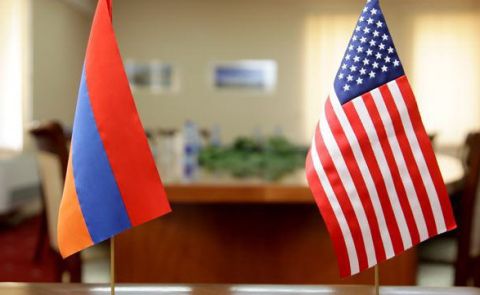
Mirzoyan Meets US Deputy Assistant Secretary Joshua Huck
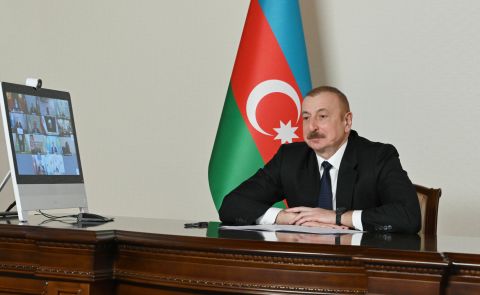
Azerbaijani President Holds Talks with UAE and German Business Delegations on Economic Cooperation
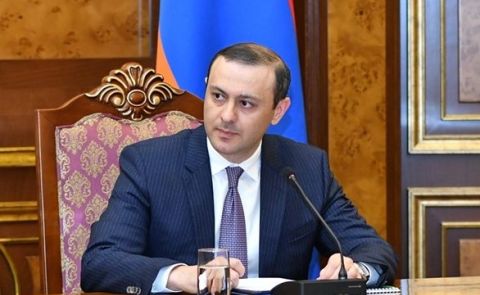
Grigoryan Confirms Armenia’s Readiness to Dissolve OSCE Minsk Group Upon Peace Treaty Signing
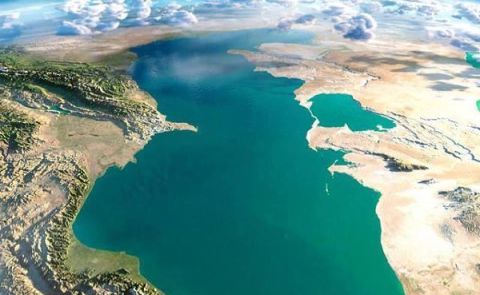
Azerbaijani Official Warns of Ecological Risks to Caspian Sea, Similar to Lake Urmia and Aral Sea
